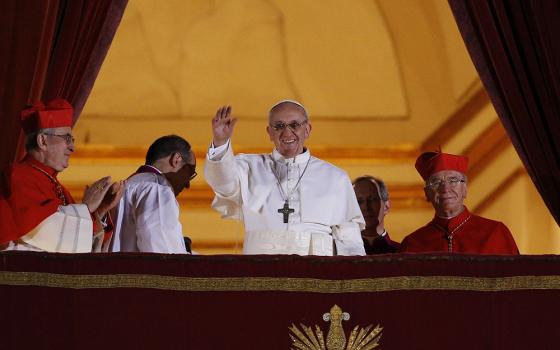Blessed the man who finds refuge in you, in their hearts are pilgrim roads. -- Psalm 84:6
This is the sentiment that underlies an ongoing series on PBS called "Sacred Journeys," hosted by New York Times columnist and best-selling author Bruce Feiler. "As long as humans have walked," explains Feiler, "they've walked to get closer to their gods."
The series follows American pilgrims embarking on far-flung journeys around the world: to Jerusalem, Mecca, Lourdes, and the Japanese island of Shikoku, where pilgrims walk 700 miles to visit 88 temples in the spirit of the great Heian democratizer of Buddhism, Kobo Daishi. These episodes are available for free online; the two final installments, about the Kumbh Mela pilgrimage on the Ganges and the festival of Osun-Osgobo in Nigeria, will air and be released tomorrow.
Having walked the Camino de Santiago myself, my favorite installment so far may be the Shikoku episode, for it most emphasizes the way rather than any single destination. The episode does a lovely job evoking the hallmarks of a journey on foot: the beauty of the cathedral of the natural world, the way that external transitions in the landscape lead slowly to inner transformation.
I have long adored this description of pilgrimage by the Spanish bishop Eugenio Romero Pose, a lifelong admirer of the Camino de Santiago:
The pilgrim has an authentic experience of time: rising before the sun is up; keeping silence through the morning so as to raise her sights to the Presence of God while beginning life anew; noting how the color of things changes as the day advances; living every moment intensely; resting in a church, in some shade; living without a watch, without calculating the time.
What is important is not what is fleeting, but what is eternal. Each day passes, but time receives the imprint of eternity. Alive in her is the hope of reaching her goal, moved by the longing for Ultimate Truth. She comes to understand that what is important is to discover the meaning of her existence, in the face of which the need for conversion is constantly renewed.
But indeed, all of the series' segments convey essential dimensions of the pilgrimage experience, such as the opportunity it presents, as Feiler remarks in the Jerusalem segment, to "escape the ordinary and enter the extraordinary." And each episode, while giving close attention to pilgrims' individual journeys and personal motivations, also captures the camaraderie that so often binds fellow travelers together.
This communal spirit, for me, bespeaks something authentically "religious," which expands that term beyond simply the uncritical institutional allegiance that is so often, and so glibly, opposed to "personal spirituality." That pilgrims belong to something bigger -- to each other and, just as importantly, to other generations of pilgrims throughout history -- may be part of the series’ implicit response to one of its recurrent paradoxes: "Today organized religion is more threatened than ever," Feiler muses in the intro to each episode, "yet pilgrimages are more popular than ever."
In some cases the filmmakers make the burdens and insufficiencies of institutional belonging quite clear: one of the most moving moments occurs when Amira Quraishia, a Muslim chaplain making her hajj, weeps upon seeing how strictly men and women are segregated in Mecca. "It feels like the prophet is farther away than ever," she laments.
But in other cases the relationship with religious tradition is subtler, and perhaps more mystical. Many of the pilgrims struggle with a faith that feels abstract and a God who seems distant; pilgrimage, Feiler says in Jerusalem, gives them "a chance to experience something real," something that anchors their spiritual longings in the concreteness of a tradition and of the world.
Jennifer Tsai, of Duluth, Ga., a pilgrim to Shikoku who "doesn't practice any religion actively but [has] always had spiritual beliefs," suggests, "I don't know that I would literally believe in everything we say or do at the temples, but I think the spirit of it is what counts. And going through those actions, and especially seeing how important they are to other people, I can take on some of that meaning for myself."
Similarly, at Lourdes, the filmmakers are continually reaching toward bigger questions than whether the miraculous healings are real. "In every miracle there is sufficient light to believe if you want to believe, and not to believe if you do not want to believe," explains Alessandro De Franciscus, the doctor charged with investigating whether individual reports of cures are scientifically unexplainable. What is clearer, and perhaps more important, than any question of physical "cures" is the more holistic sense of "healing" that occurs so abundantly at the springs.
De Franciscus concludes his interview by speaking of the true meaning of the miraculous. "If there's something I have learned at Lourdes over the years, it's that every now and then in life it's so useful to just lift your hands and say, 'This I do not understand.' "
To my mind, "Sacred Journeys" evokes what we might call the sacramental nature of religious practice: the incarnation of the sublimely mysterious in the concrete and tangible reality of the world. Perhaps we will all feel inspired to make some kind of pilgrimage in this new year, ourselves.



